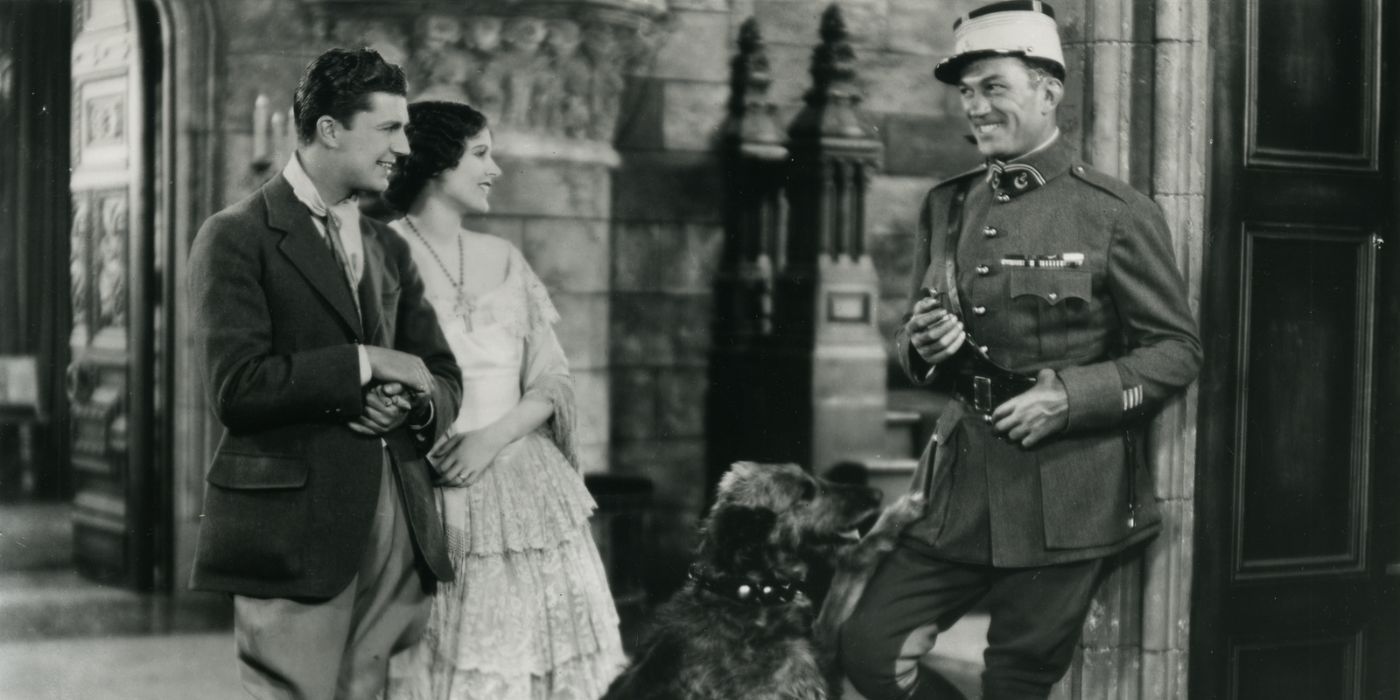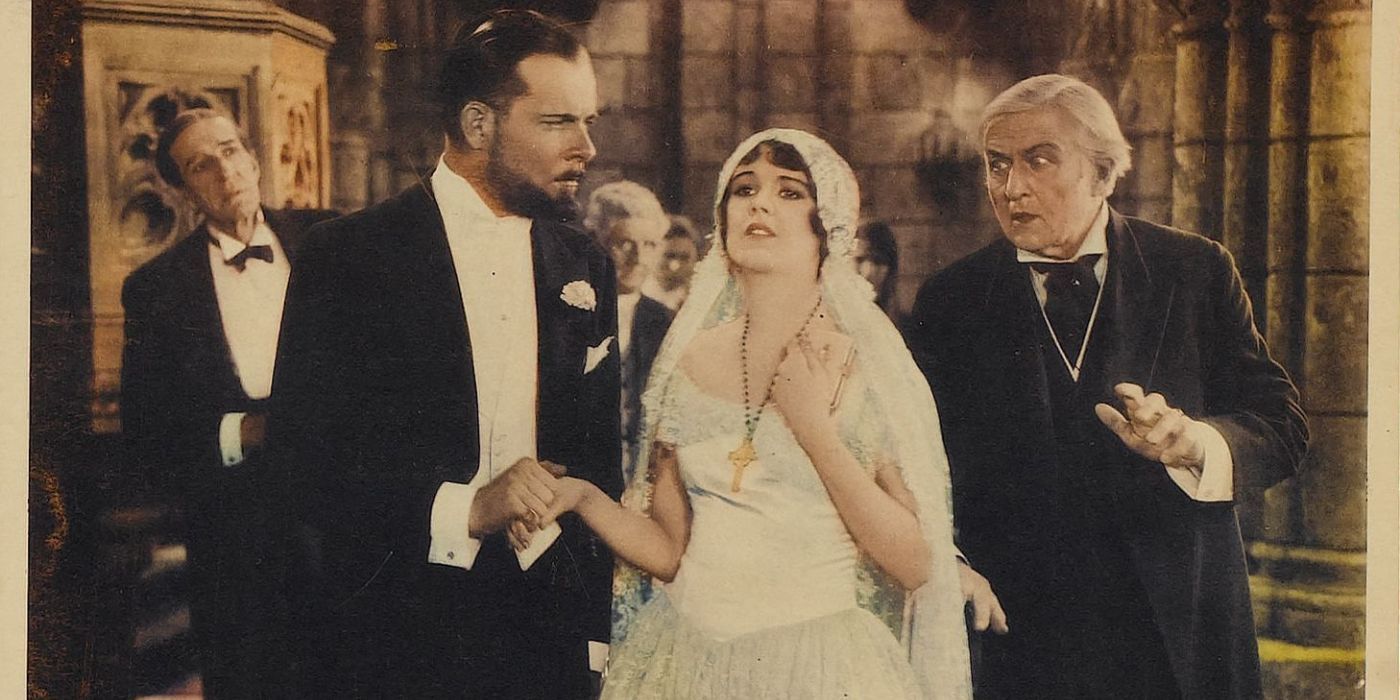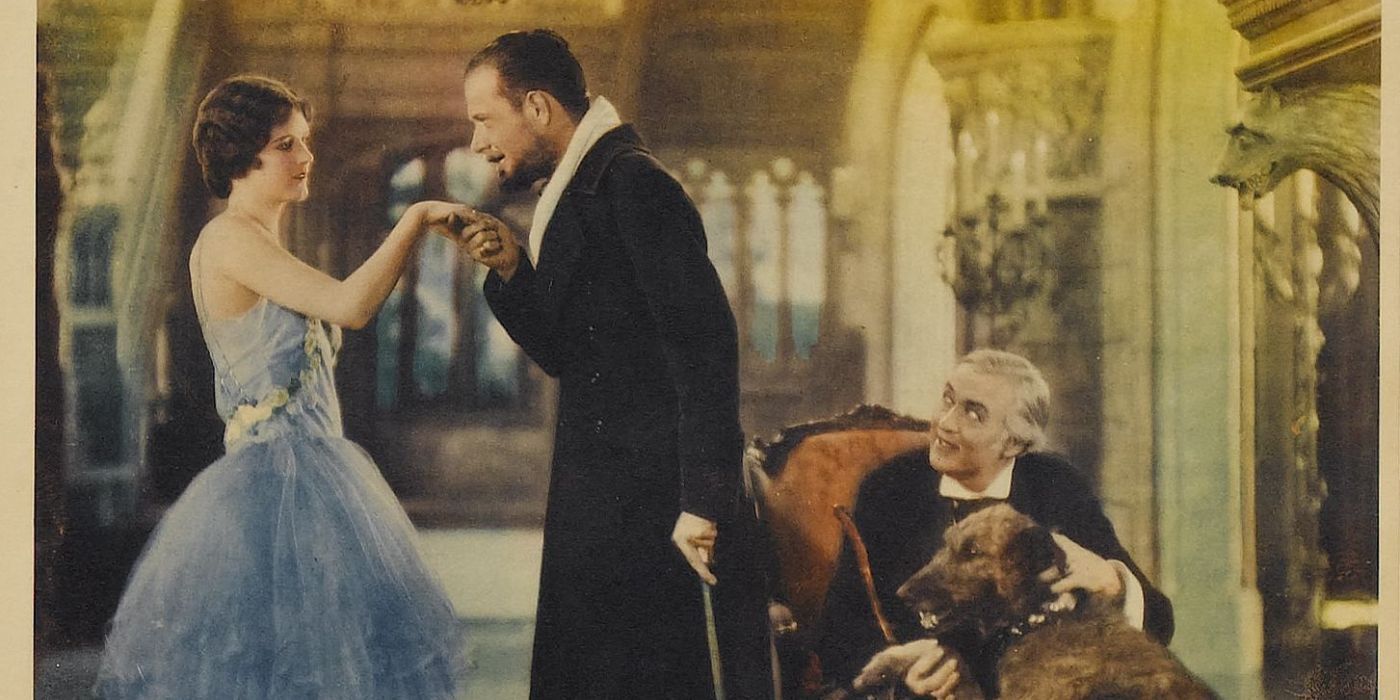John Ford is best known for directing some of the most iconic Westerns of the mid-twentieth century. From Stagecoach to The Searchers to How The West Was Won to his Calvary trilogy and more, Ford’s filmography is largely a list of gun-slinging, horse-racing, desert-dwelling American movies that defined a generation. That being noted, with a career spanning six decades and over a hundred films, John Ford made more than a few movies that fell outside of the Western genre, including literary adaptations like The Grapes of Wrath, military documentaries like The Battle of Midway, political dramas like Young Mr. Lincoln and The Last Hurrah, and one dark melodrama that toes the line of expressionism, experimentalism, and at times, the avant-garde.
Ford started his career in the 1910s, over a decade before synchronized sound became the standard for movies. Among his early silent films were a number of Westerns, including his directorial debut The Tornado and his breakout success The Iron Horse. Inspired by D.W. Griffith and his brother Francis Ford, John Ford was developing a cinema that spoke to and contributed to an American mythos. Towards the end of his tenure as a silent director, though, he made a film that took its influence from elsewhere, one that would stand as an outlier in his filmography for its unique setting, aesthetic, and artistry.
John Ford Adapted an Irish Novel Into an Expressionistic Melodrama
Ford’s 1928 movie Hangman’s House is far from a Western. Adapted from the Irish novel of the same name, the film focuses on an Irish outlaw named Citizen Hogan (Victor McLaglen), who returns to his home country to slay an evil socialite named John D’Arcy (Earle Fox). Hogan has a vendetta against D’Arcy for having an affair with and then deserting his late sister in Paris. Meanwhile, D’Arcy has remarried the daughter of the wealthy Lord Justice O’Brien (Hobart Bosworth), who is infamous for having sent many men to the gallows. The Judge’s daughter, Connaught O’Brien (June Collyer) has no romantic interest in marrying D’Arcy, and would rather wed her lifelong love Dermot McDermot (Larry Kent). With her father on death’s doorstep, however, she obliges and marries D’Arcy under protest, just in time for his dark past to catch up with him.
In short, the film is a melodrama with central themes of love, revenge, death, and family. This does not stray too far from the familiar Fordian mold, as several of his Westerns deal with similar themes, and he would go on to direct numerous other melodramas in his early career, including Pilgrimage, Doctor Bull, and Arrowsmith. Even the Irish setting isn’t a complete departure from Ford’s work, as the director— a man of proud Irish descent himself— would return to the country for How Green Was My Valley in 1941 and The Quiet Man in 1952, the latter even being filmed on location.
However, when Hangman’s House hit theaters in 1928, it drew unique comparisons not to the films of Ford’s early Hollywood peers, but instead to the work of directors across the pond, notably German filmmakers operating in the Expressionist tradition of that same decade. According to Tag Gallagher’s book John Ford: The Man and His Films, critics particularly held Hangman’s House up against Sunrise, German director F.W. Murnau‘s first American project released the previous year.
Unlike Griffith or others in Hollywood’s inaugural class, Murnau — alongside Fritz Lang, Paul Wegener, and Robert Wiene — launched his career in his native Germany, where he brought the nation’s Expressionist art movement over to the novel cinematic medium, creating movies heavy in formalism and subjectivity. This Expressionism falls on the opposite end of the spectrum from Ford’s signature romanticized realism, which was already developing in the 1920s and would come to define his Westerns in the years to come. Nevertheless, Hangman’s House has far more staples of Expressionist filmmaking than it does of Ford’s more recognized styles.
Story, Style, and Sets Make ‘Hangman’s House’ an Outlier in Ford’s Filmography
As aforementioned, the plot of Hangman’s House has to do with family dynamics and private grievances. Set in a small Irish community, the film feels very personal, focusing on the inner drama of a tight-knit group rather than any sort of global phenomenon. Of course, many of Ford’s Westerns focus on intimate communities such as Tombstone in My Darling Clementine or Shinbone in The Man Who Shot Liberty Valance, but these Western towns often feel like microcosms of something far more worldly. In Hangman’s House, the Irish countryside feels truly contained.
That containment extends into the film’s mise-en-scène. While Ford’s work would eventually become visually known for its panoramic shots of the American West, Hangman’s House turns away from sweeping cinematography for something far more claustrophobic. Like the German Expressionist films before it, much of Hangman’s House appears to be shot on studio stages with purposefully designed sets. The environment appears Victorian, with many scenes set indoors in tight, cluttered rooms. Leagues away from Monument Valley, the sets of Hangman’s House have little about them that feel naturalistic. Although some scenes do take place outside, these are often shrouded in dense fog, cinematographically sustaining the sense of restraint while providing a ghostly aura of mystery.
On the topic of ghostliness, Hangman’s House also offers some of Ford’s most paranormal bits of cinema. Early in the film, before Justice O’Brien dies, he stares into his fireplace on two separate occasions. From the flames, he sees images of those whom he had sentenced to death. Apparitions of nooses, bodies, crying faces, and, eventually, crowds of maniacally laughing onlookers haunt him from the inferno. It could be a touch of supernatural horror iconography making its way into the film, or it could be a visual representation of the character’s inner psychology. Either way, it is far more surreal than anything Ford had put to celluloid before or since.
The Persistence of Fordian Staples in John Ford’s Most Distinctive Work
Still, Hangman’s House is not without a few characteristics that confirm it as a John Ford movie. As previously stated, it is not his last Irish-set movie, and several of the film’s themes are universal concepts that would appear in his more mythological-based Westerns. Likewise, the characters largely fall into archetypal structures. D’Arcy is a sneering, unmistakable villain, and while Hogan is not a cowboy, he is a deeply endearing rogue hero, played with the same charm that McClaglen would reliably bring to his Western roles. Meanwhile, the movie also includes a long and spectacular horse race, with gripping shots and edits worthy of Ford’s most esteemed Westerns. The sequence endorses several low-angle, head-on shots of horses coming towards and over the camera: a thrilling trick that Ford first introduced two years prior when filming the land rush sequence for 3 Bad Men. To put a cherry on top of this John Ford production, Hangman’s House also features the very first appearance of John Wayne in a Ford film. In that very same horse race scene, Wayne appears as an extra cheering on the main steed in an enthusiastic crowd. One could miss it in a blink, but the shot marks the beginning of one of cinema’s most fruitful actor-director partnerships.
Even if Hangman’s House is abstract, expressionistic, and heavily distinguished in John Ford’s long filmography, it still sports a number of the director’s staples. Most importantly, it demonstrates Ford’s ability to tell a strong and relatable story, and to craft a film endurant enough to warrant conversation over ninety years later.



